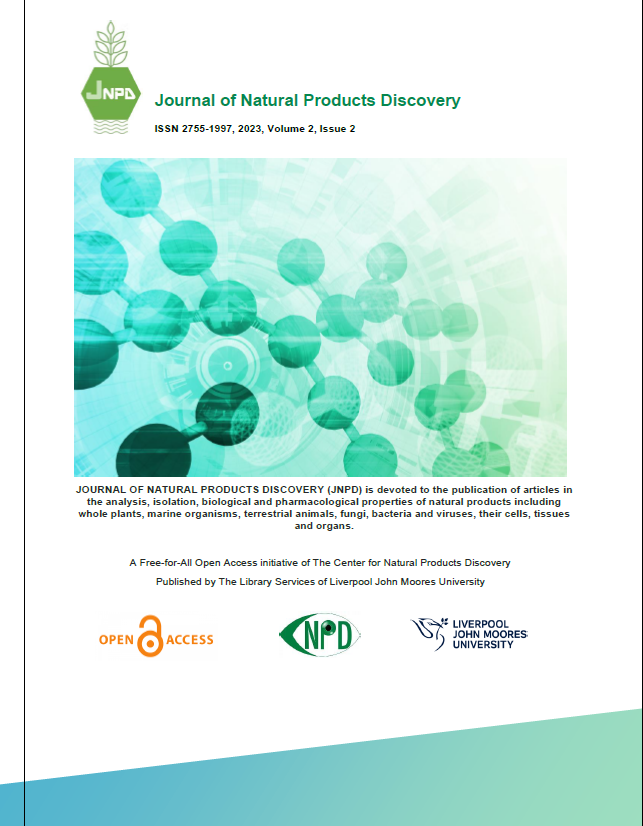Quantification of Linalool in 3D Printed Fast-Dissolving Oral Films by A High-Pressure Liquid Chromatography Method
DOI:
https://doi.org/10.24377/jnpd.article845Keywords:
3D printing; HPLC; Linalool; Lavender oil; Thrush; fast dissolving oral filmsAbstract
Introduction: Linalool has shown inhibitory effects against Candida albicans. Microbial resistance is developing towards the current antifungal drugs. Therefore, an oral formulation of linalool oil may be used to effectively treat oral thrush. A wide range of patients can use fast-dissolving oral films (FDFs). Three-dimensional printing (3DP) may be utilised for the manufacture of FDFs.
Aims: to formulate linalool in FDFs and quantify it using high-pressure liquid chromatography (HPLC).
Methods: A powder formulation containing linalool (5%w/w) was prepared and filaments were produced at 75°C and printed at 185°C. The films were dissolved either in methanol or deionised water, and linalool was quantified in the aqueous solutions. The mobile phase of a previously reported HPLC method was modified to quantify linalool in the aqueous solutions. The HPLC method was validated by measuring linalool in standard methanol and aqueous solutions.
Results: Preparing aqueous solutions of filaments and films provided less variability in the analyses. 3D-printed FDFs had an average weight of 78.44 ± 6.84 mg. Applying the HPLC method revealed that the amounts of linalool changed from a theoretical 25 mg (per 0.5 g of filament) to the range of 23.98 ± 1.22 to 33.79 ± 2.43 mg. In contrast, the amounts of linalool were changed in films from theoretical 25 mg (per 0.5 g of film) to 13.82 ± 3.24 mg to 21.04 ± 0.92 mg. These observations indicated the evaporation of linalool considerably during printing at 185 °C.
Conclusion: This work found that linalool FDFs should be printed at temperatures lower than 185 °C and dissolved in deionised water for better HPLC analytical consistency.
Downloads
Published
Issue
Section
License
Copyright (c) 2023 Touraj Ehtezazi, Asmaa Kteich, Rana Abdulkarim, Rachael Lynch, Marwan Algellay, Alice P McCloskey, Matthew Roberts, Satyajit D Sarker

This work is licensed under a Creative Commons Attribution 4.0 International License.
This journal provides immediate open access to its content with no submission or publications fees. Authors retain copyright and grant the journal right of first publication with the work simultaneously licensed under a LicenceCreative Commons Attribution License that allows others to read, download, copy, distribute, print, search, or link to the full text of works in this journal. It also allows others to remix, adapt and build upon the work, as long as credit is given to the author(s).


